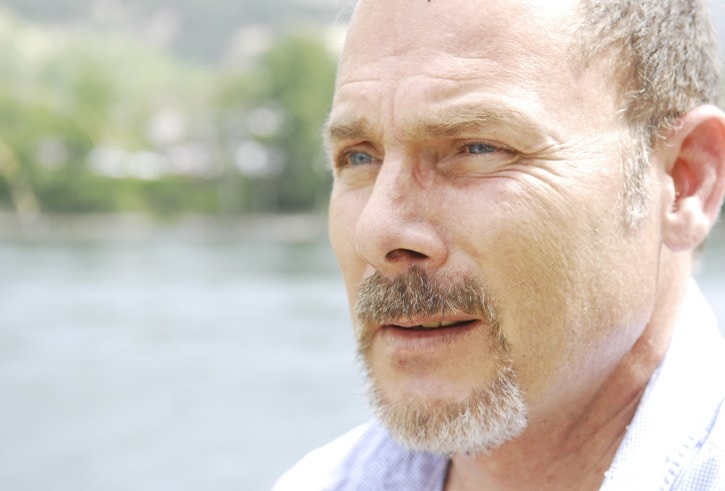Dennis Eastman’s life ended when he was 23 years old.
The Nelson native was an amicable young man. He was mild tempered, athletic and he loved life.
But like many young men he was searching for his place in that life and he got mixed up with the wrong crowd, a crowd that led him even further astray after his mom, Sherry, died of bone cancer.
At the time he was working at a sawmill in Revelstoke. Coming home one night on a day off in Nelson he had too much to drink, missed a curve in the road in his car, took out 60 feet of guardrail and crashed his vehicle at the foot of High Street.
Dennis Eastman did not die that night, but the life he knew did. When he woke up from a coma 60 days later with a brain injury and numerous broken bones, he spent the next year relearning how to walk, talk and develop basic motor skills, and the well-adjusted young man was gone.
It was replaced by a man who could not hold his rage, a job, or to communicate with others and he ended up on the street and dealing with addictions. For that fact, Dennis Eastman wished he had died at the scene 23 years ago.
“I wish I would have never woken up. If I wouldn’t have woken up, I wouldn’t be dealing with this right now. I would have died,” he said, 23 years later.
That night began 16 years of what could only be described as a search for a geographical cure, as Eastman spent the years trying to solve the dilemma of his new life with a brain injury, battling depression and suicidal depression to boot, moving over 90 times.
His life mirrored the sometimes insurmountable hurdles thrown at those with a brain injury: being in and out of the psychiatric ward or jail; misunderstood and dismissed by social service agencies because he was too difficult to deal with; facing government red tape and unhelpful bureaucrats—and all because of his brain injury.
But that is the nature of life with a brain injury, said West Kootenay Brain Injury Association outreach worker Jennie Kelly during June’s Brain Injury Awareness Month. The government system is onerous to deal with, so arduous many people become discouraged and fall by the wayside.
“It’s hard enough for people without a brain injury to deal with the government, but it’s even harder for a person with a brain injury,” she said. “There are so many hoops for people with a brain injury to jump through just to get help, and the government doesn’t make it any easier for them.”
For years the pattern was the same as Eastman would find a place, get situated, sometimes find work, but then something would happen. Invariably Eastman would get angry, he would embarrass himself, and then would have to pack up and move and try somewhere else.
He tried to work several times after the accident and found he could not hold down a job. He would get frustrated and had trouble focusing and concentrating on what was at hand. If he didn’t quit he was fired.
So welfare became his bread and butter, as did homelessness, addictions to drugs like heroin and alcohol, and attempts at suicide became frequent, with depression eventually coming home to roost.
“If you suffer from mental illness, you have depression thrown in,” he said.
Eastman fell through the cracks of the system. For 16 years he battled with ICBC to get some kind of compensation for his brain injury. There was a clause in the Insurance Act that stated if anyone sustained a brain injury in a car accident, drinking and driving or not, they were entitled to some money for rehabilitation.
Although Eastman could walk and talk, drive a vehicle, he could not hold down a job and needed help, he just couldn’t seem to communicate that. He grew frustrated quite easily, a frustration that often spawned an angry, ‘F’-word riddled outburst. In a government office filled with the maze of bureaucracy, such outbursts were frequent and often resulted in Eastman dealing with police rather than government officials.
“I see life black and white now, I don’t see the colours in it. They (government) don’t want to see that,” he said. “(With government) you have to play the waiting game. And the hardest thing for a person with a brain injury to do is to wait.”
Eastman said he was never told what he was entitled to. Instead, he had to try and find a counselor who was knowledgeable about the system and who could point him in the right direction.
He found one. It took him 16 years to get ICBC annuity through Canada Life, to get them to classify him as not being able to return to work. It will now last until he is 65 when he would receive pension.
His life is now on track. He hasn’t been depressed in years now that his medications have been correctly sorted out. And he’s been in a relationship that has changed his life around, living in Salmo for the last few years in a house he can finally call his own.
Eastman hoped his story could shed some light on the difficulty of living with a brain injury during national Brain Injury Awareness month.
“When you ain’t got nothing, life is pretty hopeless ... but no matter what, you have to keep trying and fighting and hoping it will get better,” he said. “Now life is making up for all those years of nothing.”
